The summit had 3 speaker stages – the main stage and two smaller side rooms – so obviously I wasn’t able to attend them all, not even all the big names, as I wanted to visit many of the exhibitors too. So, here are my highlights from some of the speakers I did get to see.
Jump to speaker:
Tim Gray - Welcome
The show was opened by its founder, and leading biohacker, Tim Gray. He was just about holding it together after a, no doubt, hectic run up to the summit.
I would say that almost none of my friends have even heard of the Oura ring, but when Tim asked the audience who had one, approximately a third of the attendees did – he’s definitely attracted the right people… “we are biohackers at heart.”
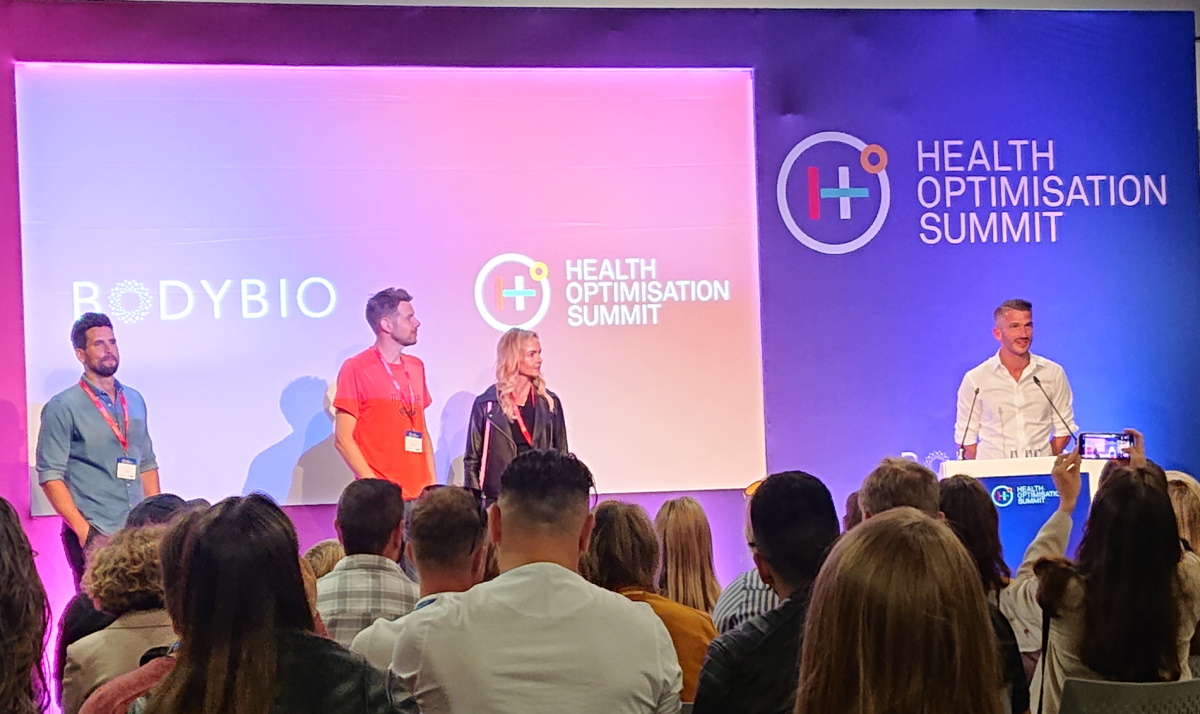
- Tim’s main supplement = BodyBio Phospholipids PC
Satchin Panda (Salk Institute) - Circadian Rhythm: The Master Conductor of Optimum Health
Having seen him being interviewed on FoundMyFitness, I was very much looking forward to hearing him in person - and right so, this turned out to be the highlight of the show for me.
Knowing what an expert academic he is on the subject (he’s a professor at the Salk Institute with almost 100 published research papers) it is impressive to see how he translates the science into understandable concepts for a wider audience – including 10 takeaway messages - and presents it in an engaging way.
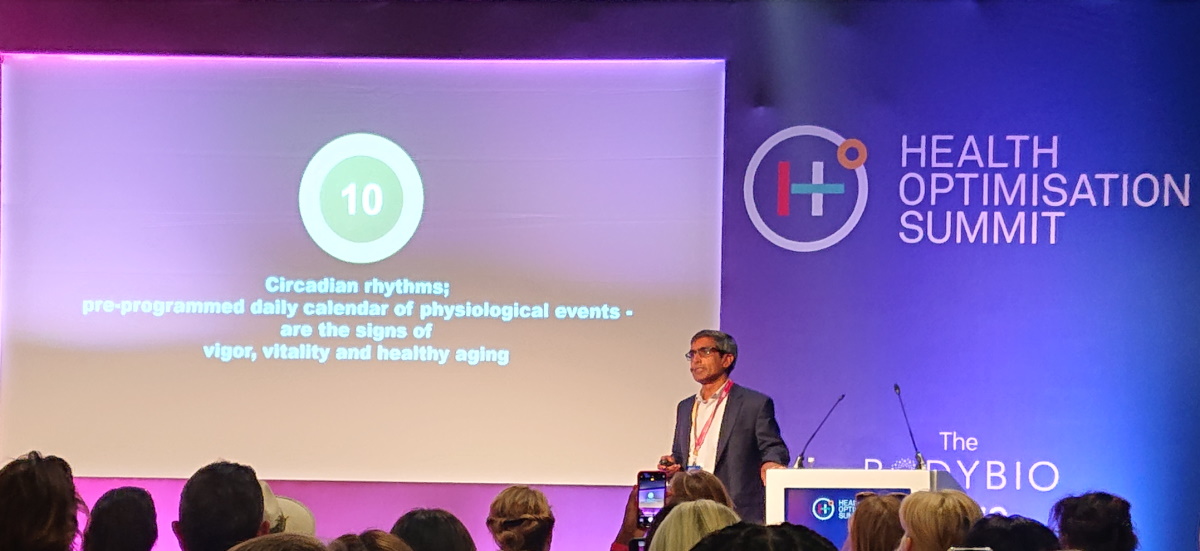
- works on circadian rhythm - the science of how our bodies are programmed to be at peak performance in every hour of the 24 hour day
- insight from circadian rhythms allow us to live an optimal long life
- an hour before waking up, your heart rate and body temperature begins to rise
- after you wake up, melatonin levels will go down, your cortisol level will begin to rise
- cognitive performance peaks during the first half of the day
- exercising in the late afternoon is way more beneficial and with minimum risk for injury
- melatonin levels begin to rise, and your body will cool down, two to three hours before your habitual sleep time
- a perfect healthy day, is when all these rhythms happen at the right time
- circadian rhythms are controlled by molecular circadian clocks
- every organ in our body has its own clock
- discovered a small group of light sensors in the retina that contain melanopsin (photopigment) that senses blue light
- even a cloudy London day is enough to activate melanopsin
- bright light reduces depression and increases alertness - but we spend more than 90% of our time indoors in dimly lit rooms
- manipulating light during day and night, we can potentially entrain our circadian rhythm
- eating also regulates the body, so eating at the wrong time can confuse the brain clock
- if you exercise late at night, cortisol levels can begin to rise and it can disrupt your sleep
- in most hunter gatherer communities people eat maximum two or three meals during the day
- if you're eating over a long window of time, more than 12 hours, it can disrupt your circadian rhythm
- World Health Organisation has classified certain kinds of shift work as potential carcinogen
- nearly 85% of the protein coding genes in our genome rise and fall at certain time of the day
- effects of drugs and supplements are much better at certain times
- many chemotherapies for breast cancers have much better effect in the morning than evening and vice versa
- taking blood pressure medication at bedtime is more effective in reducing cardiovascular events
- time restricted eating (aka intermittent fasting) can prevent and reverse many chronic diseases
- after our last meal, the body depletes carbohydrate, then it starts to burn fat
- after several hours of fasting, body produces ketone bodies which switch some circadian genes to repair and rejuvenation mode
- eating a few grams of carbohydrate flips the switch back
- 50% of adults eat for 15 hours or longer
- less than 10% of people eat consistently within a time window of less than 12 hours
- your body is not prepared to digest and absorb nutrients very well when you wakeup, so wait for an hour at least before breakfast
- stop eating at least two hours before you go to bed
- go outside and get some daylight at least 30 minutes of daylight (or least sit next to large windows)
- fixing our circadian rhythm by time restricted eating, paying attention to right sleep and exercise, we can prevent or many chronic diseases
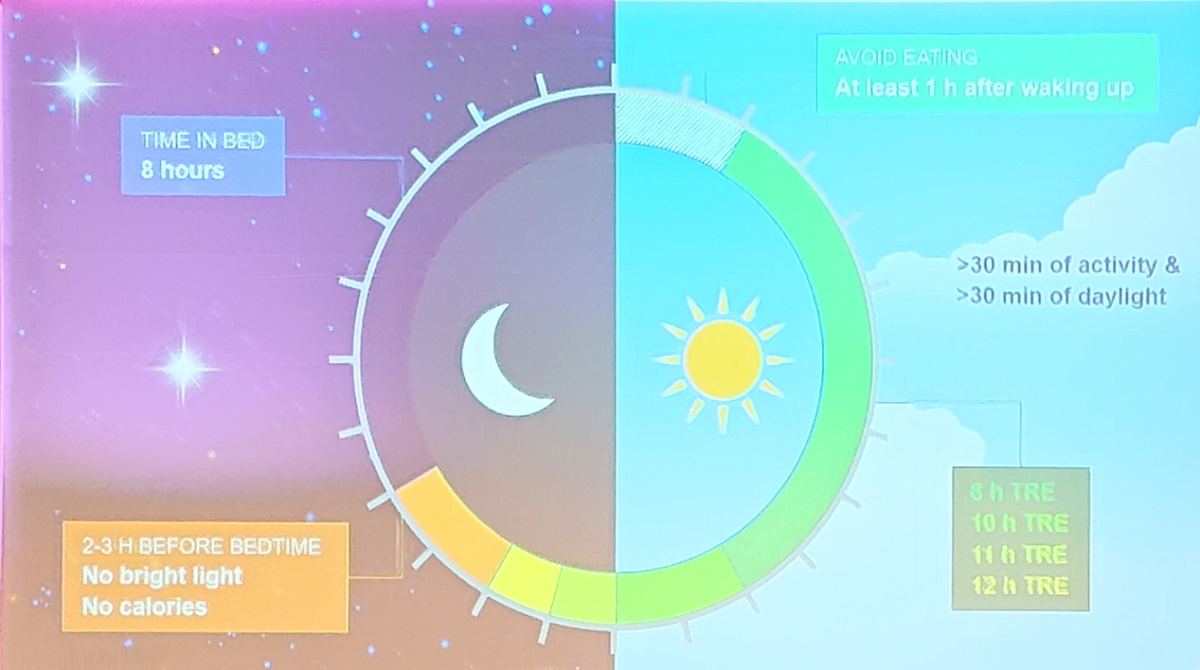
Joe Cohen (SelfDecode) - How to Use Genetics to Decode Your Health
I probably related to Joe more than anyone else – yes he had the usual backstory (youthful illnesses that he turned around) but is approach was spot on… mainly that there is no single fix for everyone.
Part of knowing how your body will respond is understanding your DNA – and a massive 80% of the audience had had their DNA sequenced… though only half claimed that they found any useful information in the result.
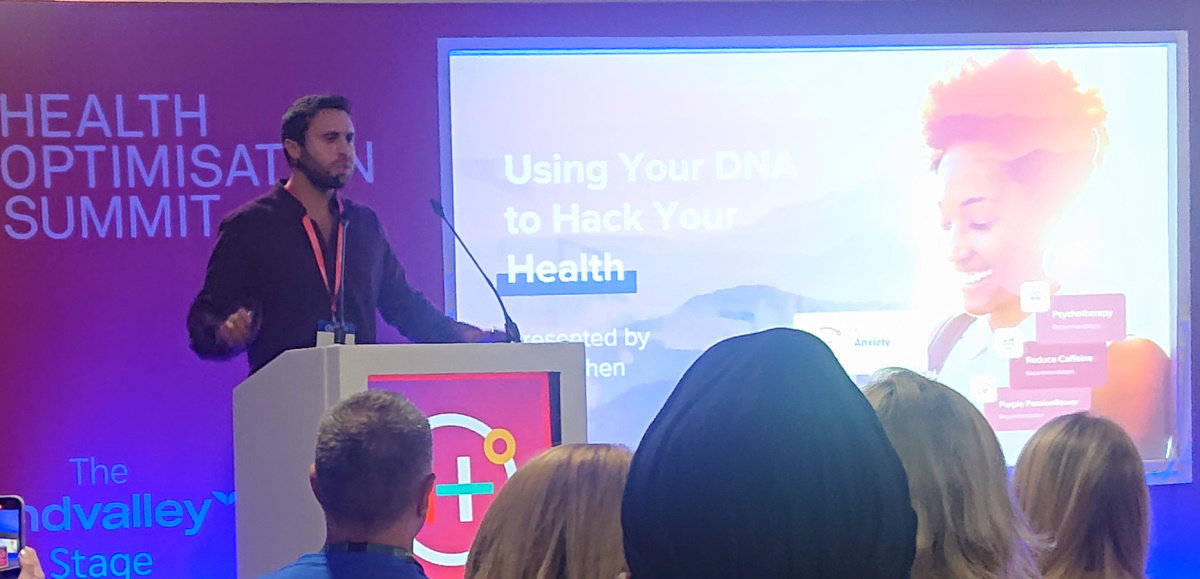
- Why health gurus didn’t work - we’re unique, what works for one person usually won’t work for someone else
- Joe’s breakthrough = self-learning + self-experimentation (one variable at a time) = SelfHacked was born
- But… self-experimentation is time consuming
- Millions of variants influence a trait
- Individual SNPs (pronounced "snips") generally are not useful (though there are exceptions for some conditions such as Alzheimer’s Disease)
- Ancestry very important
- Normal genotyping yields 700K variants
- AI and ML enables predicting 83M variants
- Genetics should be used to predict and prevent health issues, with prioritised recommendations
- Uses Mendelian randomisation
- SelfDecode raised $8 million in 2021 – now has team of 85 people (mostly in science + R&D)
- Wanted to poach staff but turned out most DNA companies didn't have scientific staff
- Mission is to help as many people as possible
- SelfDecode doesn’t sell its customers’ data
- Joe went through personal examples of how discovering which genes were affecting his mental health helped him understand which supplements to use
James Carroll (THOR) - Increased HRV and Reduced Inflammation: The Benefits & Evidence for Photobiomodulation
Now, this was an unexpectedly interesting talk – if “photobiomodulation” doesn’t sound like pseudoscience, I don’t know what does… but it turns out there is a lot of real research and clinical trials backing it up.
He also highlighted one of my concerns with many mice experiments – they are done on inflicted animals, so improvements are really only returning them to normal.
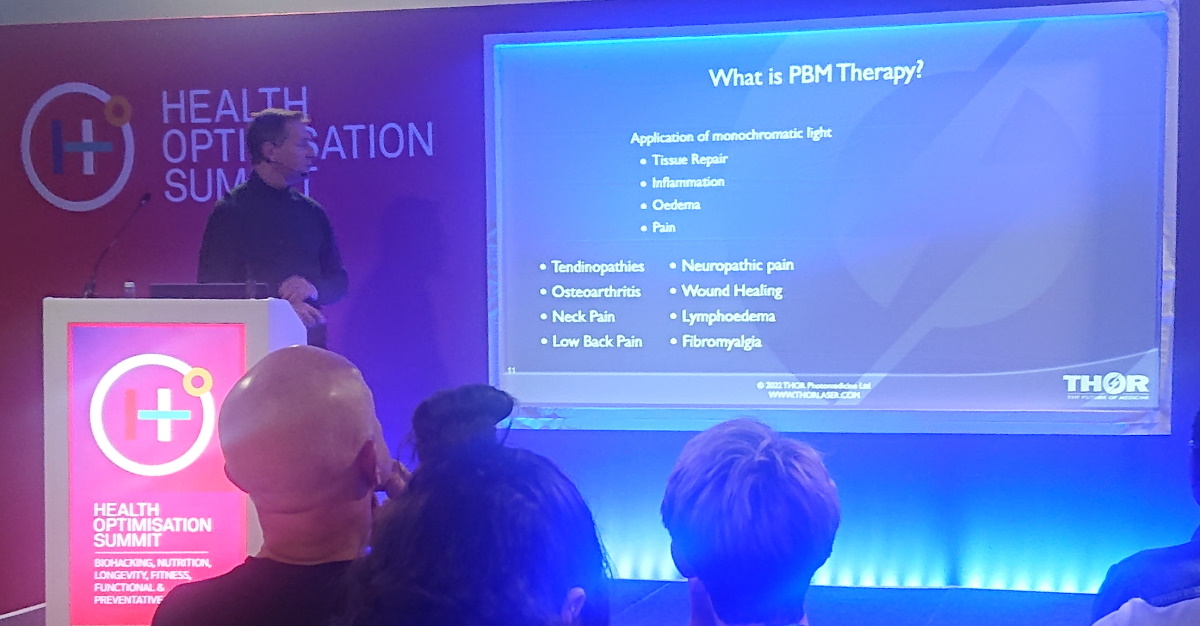
- started life as an engineer designing radio stations
- not a scientist or a doctor or even a biohacker - but is into regeneration
- coauthored 27 academic papers and four academic books
- have collaboration with 60 different academic institutions around the world
- most of the published clinical evidence in our field is in musculoskeletal pain
- also good evidence for its effects on neuropathic pain like shingles and post herpetic neuralgia
- used for some time by athletes to improve their strength, endurance and recovery
- 985 randomised placebo controlled clinical trials have published in peer reviewed medical journals
- delivered more than 30 million treatments to patients - yet most doctors have never heard of it
- improves blood flow and lymphatic flow
- scars and inflammation and edema around a wound and surgery reduced if you pretreat the patient
- put light into bone marrow and there's a release of stem cells
- stimulates anti-inflammatory and regenerative effects - too much (intensity/time) and you begin to lose the effect – need training to determine this therapeutic window
- lollipop device used in oncology to prevent oral mucositis (which stops people eating and drinking) is a recommended treatment by the National Institute for Health and Care Excellence (NICE) – there is no other treatment
- cofounder/investor in Lumithera to treat dry age-related macular degeneration (AMD) - preliminary data shows improved visual acuity
- as we get older, peripheral blood blood reduces (doesn’t reach corners of our body)
- photomodulation seen to increase haemoglobin to the brain
- PBM treatment on healthy tissue makes the tissue more resilient
- also see an increase in heart rate variability
- tests in flies see 100% increase in ATP, and they live longer
Jack Allocca (Somnivore) - The Use of Psychedelics for Better Health and Cognition
Definitely the most entertaining talk of the show. But given the topic, and that it was delivered by someone who takes his own medicine, that should be no surprise! It was fast paced, and being the last talk on Saturday, he was allowed to significantly overrun – but nobody left early.
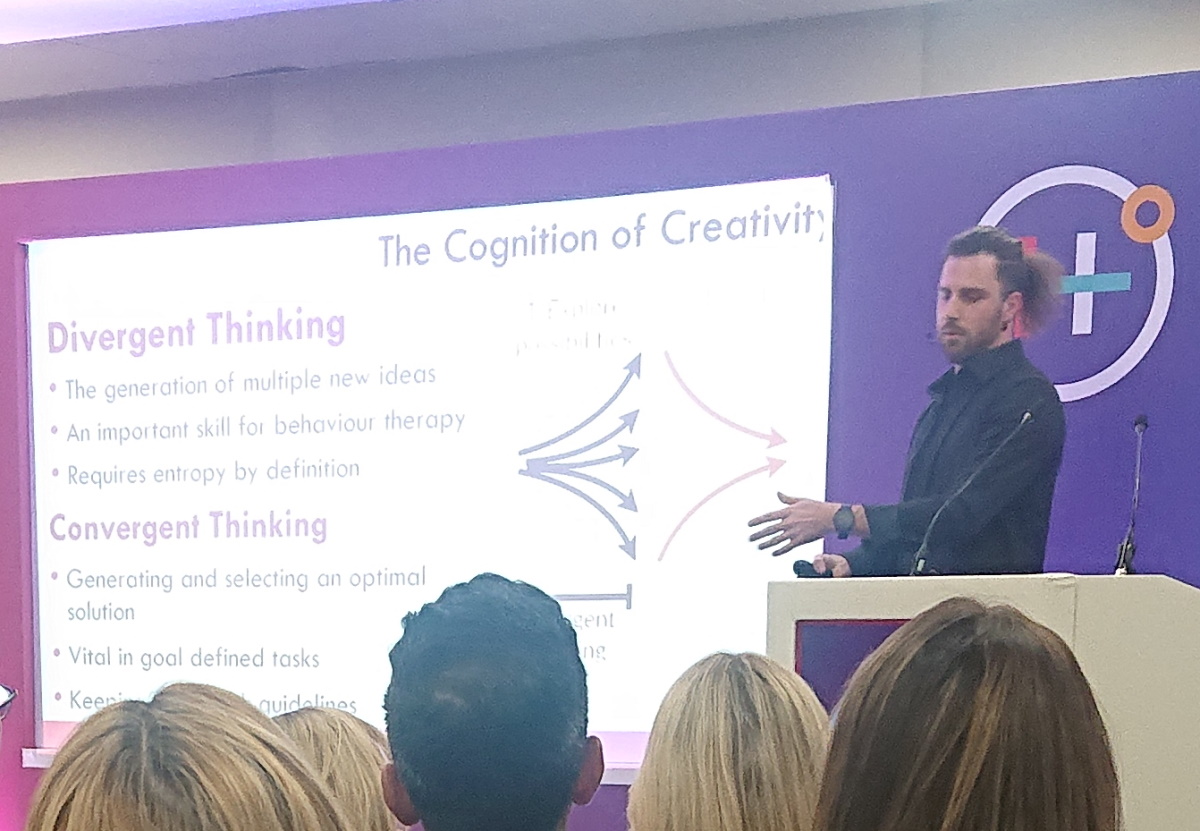
- What does that mean health optimization?
- health allows one to perform as average for your age group - if you're significantly lower than that, then you're sick
- optimisation is an ambition to go further than the average human experience
- has taken industrial amounts of almost anything I could get my hands on, including psychotropics, psychedelics, dissociatives, deliriants, stimulants, sedatives, solvents, and research chemicals
- also from traditional communities in Papa New Guinea, South America, Oceania, Africa and Polynesia
- if talking about altered states, we have to talk about the base reality otherwise, we don't really have a point of reference
- consciousness sees the environment through photons, vibrations in the air, and touch, smells, etc. – taking in less than 1% of the information available
- requires a very concerted agreement or consensus of different parts of the body and the brain
- lots of different nodes of the brain usually don't communicate much because otherwise you're going to have a very colourful experience in life - I speculate this is how AI operates most of the time
- a strong stimuli is really breaking prediction models - most associated with danger
- many of the psychedelics are completely harmless, you would have to eat like three kilos of magic mushrooms to die
- these are extreme sports, for your mind and your body.
- creativity with psychedelics goes through the roof - lateral thinking, disruptive thinking
Harry Adelson (Docere Clinics) - Stem Cells: Nature's Most Powerful Tool for Healing
I’m very wary of stem cell treatments provided by independent clinics, but thought I go along to Harry Adelson’s talk to see what he had to say.
Unsurprisingly, he was a great presenter and very charismatic. He cleverly preempted criticism by joking about being called quack and bragged that his first patient (Gary Young) is listed on QuachWatch. He was also honest that his is a naturopath rather than a medical doctor – given that naturopathic curriculums teach pseudoscience (such as homeopathy) my alarm bells were ringing, but here’s his point of view.
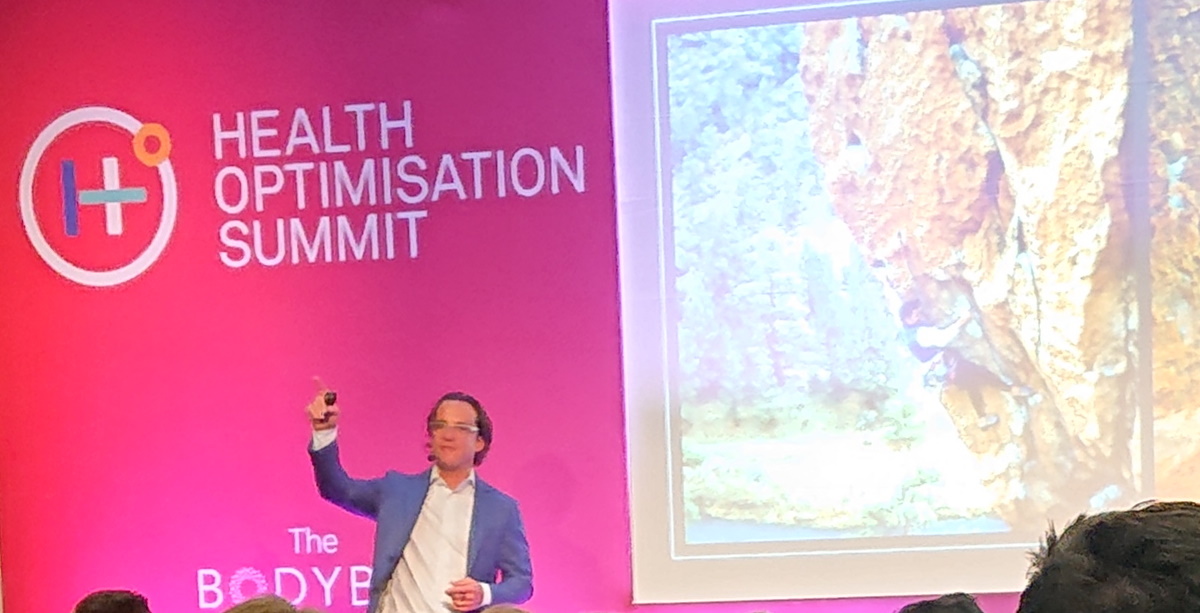
- you have to understand the nature between rational fear and irrational fear
- "I don't care what people think about me, this is what I'm going to do"
- he got an X-ray machine and learned how to use it
- it allowed him to start injecting stem cells anywhere in the body
- in early days patient, anesthesiologist was optional - resulting in angry people who didn’t come back – even though had positive results
- VCLS very small embryonic like stem cells exist in our blood - smaller than a red blood cell
- freely passes the blood brain barrier, and it passes through your lungs
- almost as primitive as embryonic stem cells
- there's very little data on them, it's a brand new field
- back in 2010/2011 I had this circuit round Colombia, Ecuador and Brazil
- initially US patients were almost 100% cowboys – they had seen bone marrow stem cells work in horses
- has treated Dave Asprey and Ben Greenfield
Jenny Goodman (Author) - Wake Up and Smell the Poison! Detoxing in a Polluted World
Dr. Goodman’s bio looked sensible enough, and started with a good premise that environmental pollution and poor nutrition are having negative effects on our bodies and brain – probably something most people agree on.
However, at some point she not only blamed some things on 5G (totally unproven concerns) and also had a rant about how big cancer research institutions are supporting drug companies by looking for cures instead of prevention because big pharma is making too much money out of chemotherapy. Disappointingly a lot of the audience cheered at this view.
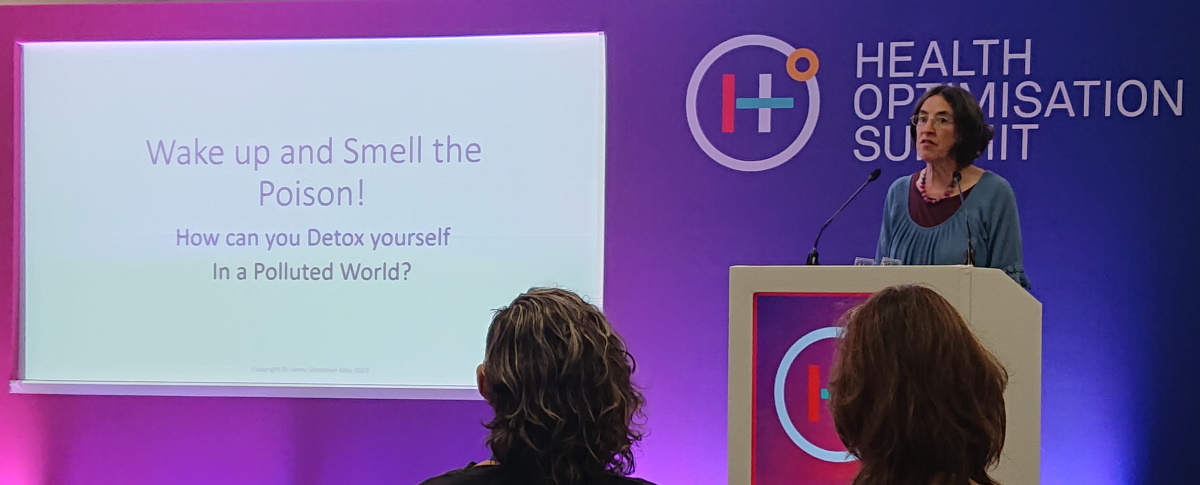
- at medical school you weren’t taught why people got sick in the first place - the causes of illness and preventive medicine
- discovered the British Society of Ecological Medicine – doctors who were disillusioned at dishing anti-drugs (anti-inflammatories, anti-epileptics, antibiotics) – rather then figuring out what the body needed
- ecological medicine in two senses – 1. it sees the whole body as one ecosystem, and 2. the body exists within the wider ecosystem of planet Earth
- putting the good stuff in (that's nutrition) and taking the bad stuff out
- genetics only plays a tiny part (with exceptions, e.g. cystic fibrosis is a genetic disease)
- for millions and millions of years, we lived in a wild environment - our bodies have not been able to adapt to the toxins we're surrounded by since the industrial revolution
- primarily, we're talking today about chemical pollution in the soil - if it's in the soil, it's on your plate, you're eating it
- conversely, if it's not in the soil (reduced nutrients from intensive farming), it's not on your plate
- most difficult one is the pollution in the air
- we are also taking in toxins through our skin – material sprayed with insecticides, creams and perfumes
- we're spraying stuff around our homes that is toxic
- petrochemicals are fat soluble – will come out of the body after 5-10 minutes of sweating in a sauna – but will be reabsorbed, so wipe the sweat off with dry towel
- in 1956, we spent 33% of our income on food, and it's now down to 8%







